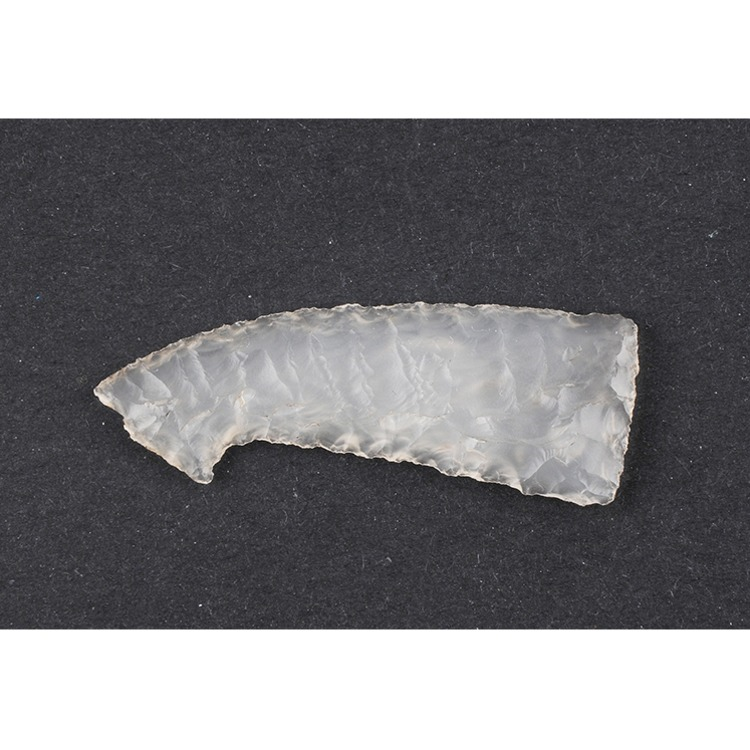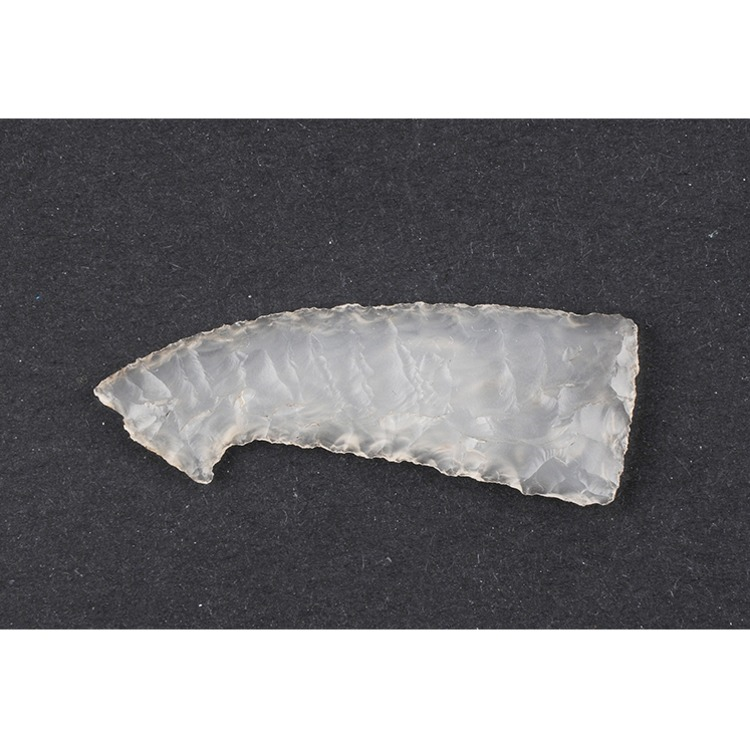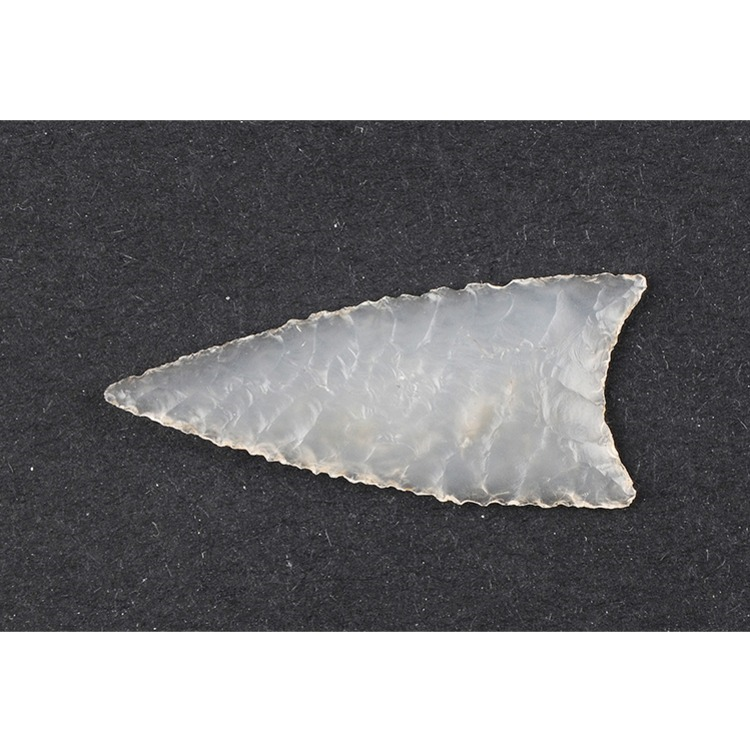
     |
|
White agate concave bottom stone arrowhead, Neolithic Age, a national first-class cultural relic. The device is 3.4 cm long and 1.4 cm wide. It is pressed from white agate, the body is in the shape of a triangle with arc edges, and the bottom is concave. The whole body is pressed, very beautiful. It is a representative work in the fine stone tools of the Neolithic Age. It was collected in 1987 near the skeleton of a tomb who was denuded by wind and sand on the southern slope of the western part of the Tengjiagang site at Angang River. It is now in the Qiqihar City Museum.
镞, the explanation in the dictionary and the arrow. The "Angangxi people" 7500 years ago used such arrows to shoot fish and waterfowl, and created the splendid Angangxi culture, making it the cornerstone of the northern fishing and hunting culture.
Bows and arrows appeared during the further evolution of the arrow. The invention of bows and arrows was a symbol of technological development in the Mesolithic Age. Its advent has enhanced people's ability to fight against nature, promoted the development of social production, and made the hunting economy a dominant position. Bows and arrows are a very complex compound tool, which is the result of mankind's long-term experience in manufacturing labor production tools, and it is the crystallization of mankind's self-destruction.

 Instant Messaging
Instant Messaging Video Call
Video Call

